Top Canadian Dividend Stocks to Supercharge Your Income
Key takeaways
As rates fall, money should flow out of fixed income investments and into dividend paying equities
Most dividend payers in Canada are mature businesses with significant competitive moats
Dividends account for a large portion of the total returns of the stock market
3 stocks I like better than the ones on this list.Many investors first learning how to buy stocks in Canada want to know what the best options are today in terms of dividend stocks.
In this article, I’m going to give you some of my favorite Canadian dividend stocks to buy for 2024. These are hand-picked by myself, and this article contains hours of comprehensive research on some of the best Canadian stocks on the market.
I picked these stocks not only for their dividends, but also due to strong company fundamentals. A dividend is only as good as the company behind it, and you as an investor need to understand that the dividend itself is only one portion of total return.
What are the best dividend stocks in Canada?
Canada’s Most Efficient Railway
Canadian National Railway (TSE:CNR)

Canadian National’s railway spans Canada from coast to coast and extends through Chicago to the Gulf of Mexico. In 2024, CN generated CAD 17 billion in revenue by hauling intermodal containers (22% of consolidated revenue), petroleum and chemicals (20%), grain and fertilizers (20%), forest products (11%), metals and minerals (12%), automotive shipments (5%), and coal (5%). Other items constitute the remaining revenue.
P/E: 19.6
5 Yr Revenue Growth: 2.7%
5 Yr Earnings Growth: 3.8%
5 Yr Dividend Growth: 9.5%
Yield: 2.4%
Eastern Canada’s Largest Grocer
Metro (TSE:MRU)
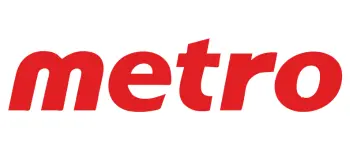
Metro’s grocery banners include supermarket chain Metro, discounters Super C and Food Basics, and ethnic food grocer Adonis, while its pharmacies primarily operate under the Jean Coutu and Brunet trademarks. Metro operates both as a food retailer and a franchisor, licensing its trademarks and supplying merchandise to registered pharmacists. The firm also acts as a wholesaler and distributor to serve smaller, neighborhood grocery stores.
P/E: 23.7
5 Yr Revenue Growth: 4.8%
5 Yr Earnings Growth: 8.1%
5 Yr Dividend Growth: 10.9%
Yield: 1.3%
North America’s Largest Natural Gas Distributor
TC Energy (TSE:TRP)
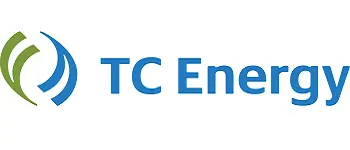
TC Energy operates natural gas, oil, and power generation assets in Canada and the United States. The firm operates more than 60,000 miles of oil and gas pipelines, more than 650 billion cubic feet of natural gas storage, and about 4,300 megawatts of electric power. The company spun off some of its oil pipelines to focus more so on the natural gas end of the business, with the new company being named South Bow.
P/E: 16.8
5 Yr Revenue Growth: 0.1%
5 Yr Earnings Growth: 0.1%
5 Yr Dividend Growth: 3.6%
Yield: 5.1%
Related
Top Stocks to Buy for Your RRSP

Canada’s Fastest Growing Big 6 Bank
National Bank (TSE:NA)
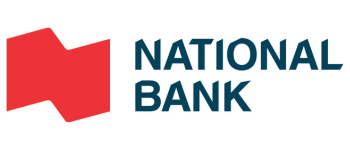
National Bank of Canada is the sixth-largest Canadian bank. The bank offers integrated financial services, primarily in the province of Quebec as well as the city of Toronto. Operational segments include personal and commercial banking, wealth management, and a financial markets group.
P/E: 11.2
5 Yr Revenue Growth: 9.3%
5 Yr Earnings Growth: 11.0%
5 Yr Dividend Growth: 10.2%
Yield: 3.7%
Canada’s Largest Residential REIT
Canadian Apartments REIT (TSE:CAR.UN)

Canadian Apartment Properties Real Estate Investment Trust, or CAPREIT, is a real estate investment trust primarily engaged in the acquisition and leasing of multiunit residential rental properties located near major urban centers across Canada. The company’s real estate portfolio is mainly composed of apartments and townhouses situated near public amenities. Most of CAPREIT’s holdings are aimed towards the midtier and luxury markets in terms of demographic segments.
P/E: 25.2
5 Yr Revenue Growth: 7.3%
5 Yr Earnings Growth: -25.4
5 Yr Dividend Growth: 1.4%
Yield: 3.4%
Canada’s Fastest Growing Telecom Company
TELUS (TSE:T)
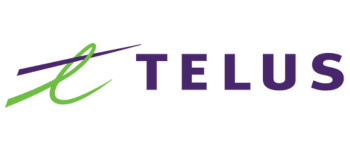
Telus is one of the Big Three wireless service providers in Canada, with over 10 million mobile phone subscribers nationwide constituting about 30% of the total market. It is dominant in the western Canadian provinces of British Columbia and Alberta, where it provides internet, television, and landline phone services. It also has a small wireline presence in eastern Quebec. Mostly because of recent acquisitions, more than 20% of Telus’ sales now come from nontelecom businesses, most notably in the international business services, health, security, and agriculture industries.
P/E: 30.9
5 Yr Revenue Growth: 6.7%
5 Yr Earnings Growth: -14.3%
5 Yr Dividend Growth: 6.7%
Yield: 7.6%
Canada’s Most Powerful Brand
Royal Bank of Canada (TSE:RY)

Royal Bank is a global enterprise with operations in Canada, the United States, and, as you’ll see the importance of later, 40 other countries. When it comes to international banking, there isn’t a bank with more exposure.
P/E: 13.6
5 Yr Revenue Growth: 4.2%
5 Yr Earnings Growth: 4.7%
5 Yr Dividend Growth: 6.1%
Yield: 3.4%
Canada’s Most Cost Efficient Oil Producer
Canadian Natural Resources (TSE:CNQ)
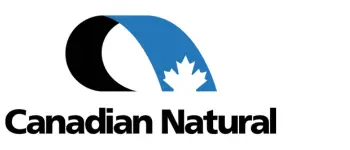
Canadian Natural Resources Ltd is an independent crude oil and natural gas exploration, development, and production company. The Company’s exploration and production operations are focused in North America, largely in Western Canada; the United Kingdom (UK) portion of the North Sea, and Cote d’Ivoire and South Africa in Offshore Africa. The Company’s exploration and production activities are conducted in three geographic segments: North America, the North Sea, and Offshore Africa.
P/E: 13.9
5 Yr Revenue Growth: 10.5%
5 Yr Earnings Growth: 4.0%
5 Yr Dividend Growth: 22.5%
Yield: 5.4%
Canada’s Largest Gas Station Operator
Alimentation Couche-Tard (TSE:ATD)

Alimentation Couche-Tard Inc operates a network of convenience stores across North America, Europe, and Asia. The company generates income through the sale of tobacco products, groceries, beverages, fresh food, quick service restaurants, car wash services, other retail products and services, road transportation fuel, stationary energy, marine fuel, and chemicals. In addition, the company operates more stores under the Circle K banner in other countries such as Indonesia, Egypt, Macau, and others.
P/E: 19.0
5 Yr Revenue Growth: 3.7%
5 Yr Earnings Growth: 12.3%
5 Yr Dividend Growth: 24.2%
Yield: 1.0%
Canada’s Largest Regulated Utility
Fortis (TSE:FTS)

Fortis owns and operates eight utility transmission and distribution subsidiaries in Canada and the United States, serving more than 3.4 million electricity and gas customers. The company has smaller stakes in electricity generation and several Caribbean utilities. Subsidiary ITC operates electric transmission in seven US states, with more than 16,000 miles of high-voltage transmission lines in operation.
P/E: 20.5
5 Yr Revenue Growth: 4.9%
5 Yr Earnings Growth: -3.7%
5 Yr Dividend Growth: 4.8%
Yield: 3.6%
Warning – The best dividend stocks don’t always have the highest yield
I see investors make this mistake, particularly new ones who haven’t been burned yet, time and time again.
It is having tunnel vision for dividend yield. They ignore the dividend payout ratio or the company’s financial health and instead chase high yields to generate larger passive income.
Unfortunately for many in early 2020, this strategy resulted in devastating consequences. I witnessed the quickest pace of dividend cuts in history, and many income stocks that were bloated in value due to their high yields saw their share prices collapse.
Chasing yield is one of the biggest and most common mistakes beginners make, and it is imperative that you prioritize the quality of the company over its pay.
Is there an ETF to make dividend investing easier?
Many people who don’t have the time to consistently monitor a dividend portfolio want to make their lives easier by investing in an ETF. Fortunately, we have a plethora of them in Canada.
Whether it is Vanguard, Horizons, BMO, or iShares, Canadians can choose a wide variety of dividend ETFs to generate passive income in a single click. Some quick examples?
- Horizons Active CDN Dividend ETF (TSE:HAL)
- BMO Canadian Dividend ETF (TSE:ZDV)
- S&P/TSX Canadian Dividend Aristocrats Index Fund (TSE:CDZ)
- iShares Core S&P/TSX Composite High Dividend Index ETF (TSX:XEI)
- iShares Canadian Select Dividend Index ETF (TSX:XDV)
It’s important to note that these dividend ETFs come with management fees and need to be considered before purchasing.
What Canadian stocks pay the best dividends?
In my opinion, you will typically see the best dividends located in reliable, mature sectors like telecoms, pipelines, and financial companies.
However, we have plenty of industrial options that pay strong dividends as well, but their yields are often not as high as those of a pipeline or telecom company.
Which Canadian stocks pay monthly dividends?
Right now, we track over 67 Canadian stocks and REITs that pay monthly dividends. If you’re interested to see what they are and what we view as the best, you can read our page on monthly dividend stocks here.
What are the 5 highest dividend-paying stocks?
At the time of writing, the 5 highest dividend-paying stocks in Canada are:
- PetroTal Corp (TSE:TAL) at 15%
- Tidewater Midstream (TSE:TWM) at 13.5%
- Parex Resources (TSE:PXT) at 12.6%
- Fiera Capital (TSE:FSZ) at 11.5%
- Cardinal Energy (TSE:CJ) at 11.3%
However, I would strongly caution investors from focusing on dividend yield and instead look to buy strong companies. A very high yield can often be a warning sign of a dividend cut. And a dividend cut usually leads to a cratering share price.
Keep in mind as well, I have excluded split corporations from the list of high-yielders above.


